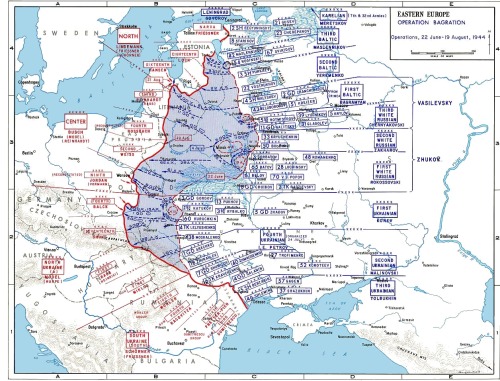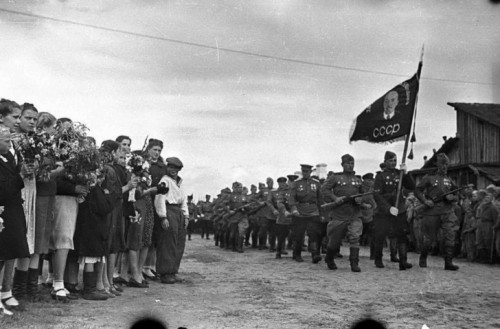The Soviet D-Day — Operation Bagration,Everyone remembers June 6th, 1944 when Allied forces cr
The Soviet D-Day — Operation Bagration,Everyone remembers June 6th, 1944 when Allied forces crossed the English Channel and invaded France, an event forever known as D-Day. Yet while D-Day is known by many in the West, like most other Soviet operations during the war the Soviet equivalent called “Operation Bagration” is little known and recognized. Operation Bagration was the Soviets grand offensive to destroy the Wehrmacht and bring the Third Reich too its knees, but it was much more than that. If D-Day could be likened to a stiff right hook that dazed the German military, Operation Bagration was more like being struck in the face with a 50 lb sledgehammer, then further pummeled while on the ground, the gruesomely dispatched with an “American History X” style curbstomp. Operation Bagaration was meant to roughly coincide with D-Day in western Europe, but due to the logistics of organizing such a massive offensive, it was delayed until June 22nd. Named after a Russian general during the Napoleonic Wars, it was a truly massive offensive. Spread out among three major fronts were 2.5 million Soviet troops, as well was as roughly 2,700 tanks, 5,300 aircraft, and 25,000 artillery pieces. After suffering terrible losses a Stalingrad and Kursk, the Germans could only muster a comparatively weak force of 800,000 men (half of which were non-combat or support personnel), as well as 800 tanks, 500 assault guns, 1,000 - 1,300 aircraft, and 10,000 artillery. The main goal of the operation was to capture Minsk, the capital of Belorussia, and thus the onus of the offensive was against German Army Group Center, which was the largest an most important part of the Wehrmacht on the Eastern Front. The offensive began on the early morning of June 23rd with a massive artillery bombardment lasting 2 hours. According to surviving German soldiers, it was the largest and most terrifying barrage of the entire war. The Soviets used a tactic called a creeping barrage, in which artillery fire would fire upon a target, the progressively creep backward to catch exposed troops that retreated to the rear. After the barrage the Red Army attacked, using a tactic called “Deep Battle” where forces would exploit various weaknesses in the enemy line, eventually penetrating it, encircling enemy forces, and then driving deep into enemy territory.The height of Operation Bagration occurred in early July when the Soviets crushed Army Group Center and took Minsk. In a situation reminiscent of Stalingrad, 100,000 German troops of the 4th Army were surrounded in Minsk. Unable to break out, they were utterly obliteration, with 40,000 being killed and the rest being captured. While Minsk was the main goal of the offensive, Bagration continued well into July and August. By the time the operation was declared over in late August, Soviet troops had driven halfway through Poland, halting at the Vistula River, practically within shouting distance of Warsaw. On other front, Soviet forces had driven into the Batlics, lifting the Siege of Leningrad and threatening to cut off hundreds of thousands of German troops in Kaliningrad (which did eventually happen). In the south, Soviet forces were invading the Balkans and preparing to storm Romania, the primary source of oil.The worst blow to Germany was not in terms of territory or resources, but men. Around 300,000 - 350,000 German soldiers were killed or missing. Another 150,000 - 200,000 were captured and taken prisoner, 50,000 of which would be forced to march through Moscow (pictured above). Army Group Center was thoroughly gutted, and would only be able to present a shadow of itself for the rest of the war. The loss of so many men devastated the Wehrmacht which was unable to replace their losses. This was further exacerbated by terrible defeats in France at the hands of the Americans and Commonwealth forces. From thence on the German Army would suffer severe manpower shortages, often replacing their ranks with barely trained soldiers who were either too young or too old for military service. The Battle of Bulge was the Wehrmacht’s last hurrah, shortly afterward the German military would crumble into dust.The Soviets too suffered heavy losses, around 180,000 killed or missing and 500,000 wounded. However, Operation Bagration was a stunning success, which irreparably shattered the back of the Third Reich. -- source link
Tumblr Blog : peashooter85.tumblr.com
#history#wwii#operation bagration#red army#wehrmacht#soviet union#minsk




